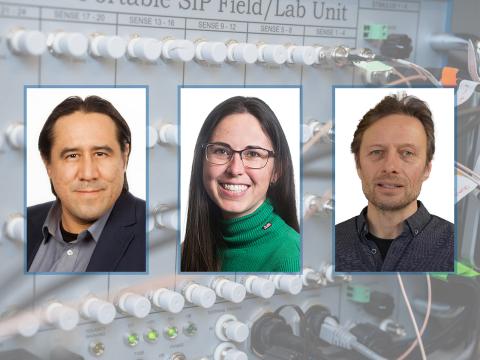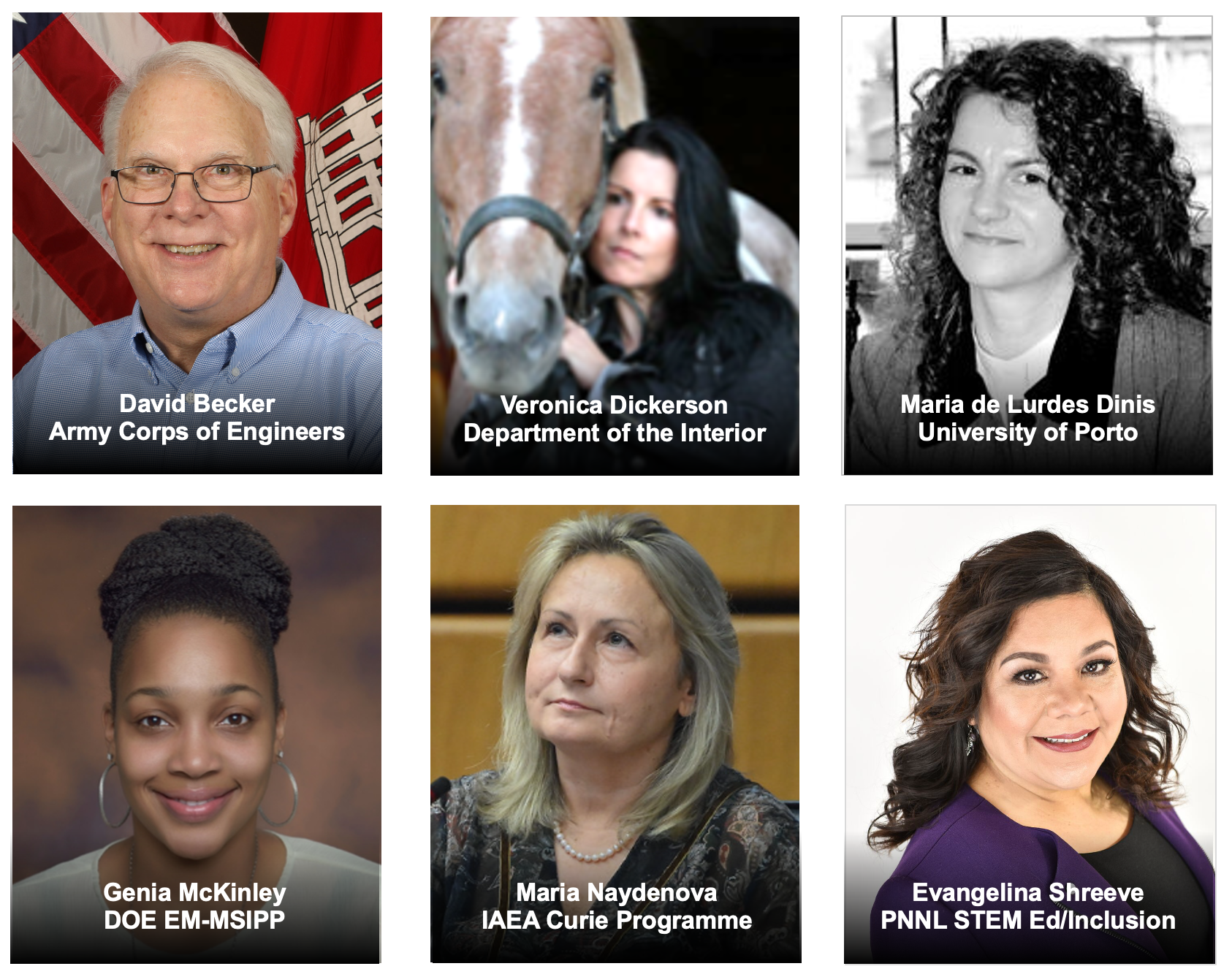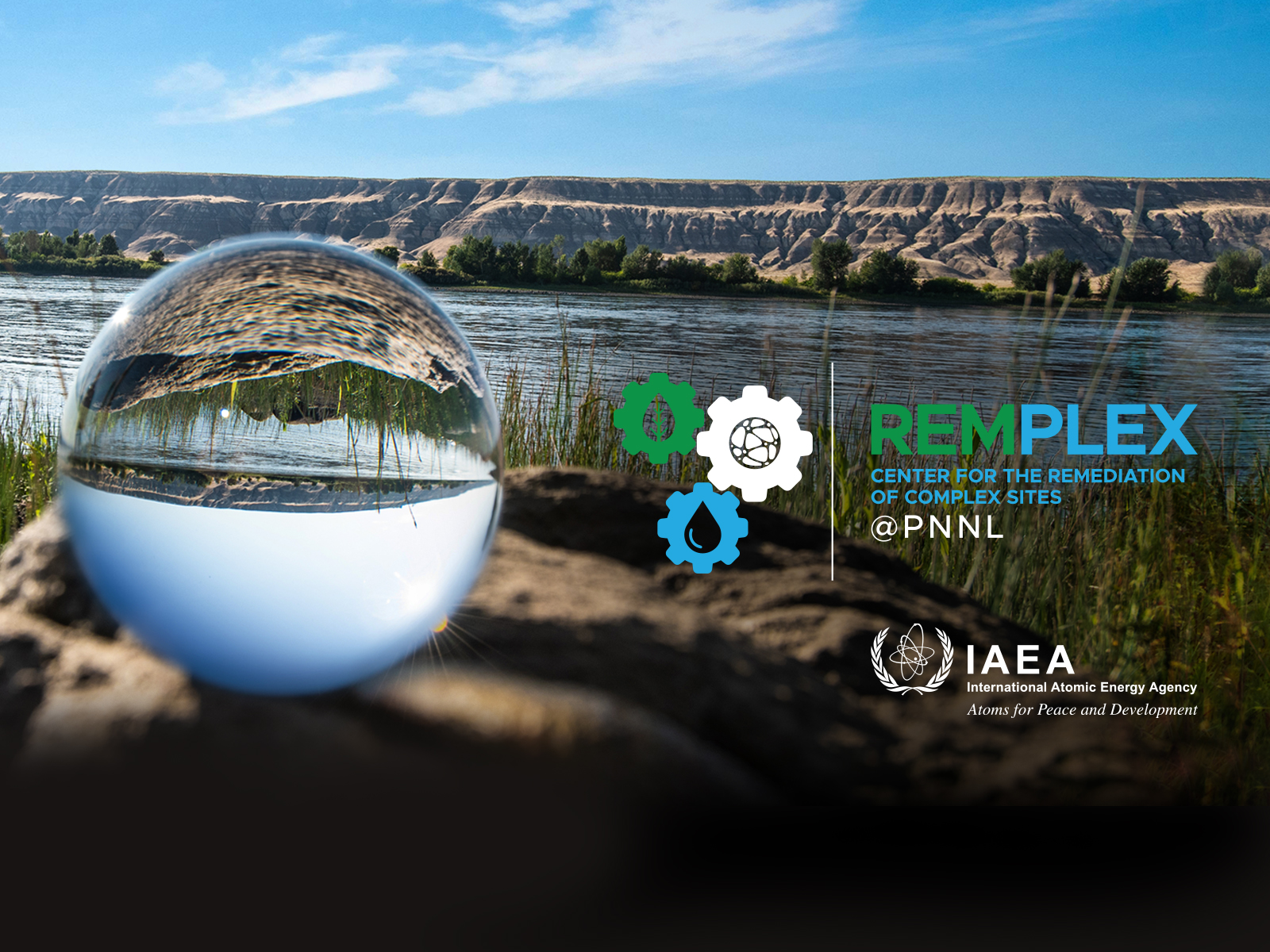RemPlex Seminars
As part of our mission to promote knowledge transfer, collaboration, and professional development related to the remediation of complex sites, we host technical seminars on a wide-ranging set of topics. To reach our broad international network, these seminars are offered online. We welcome suggestions for future seminar topics.
Search Seminars by Year2024 | 2023 | 2022 | 2021 | 2020 |
|---|
2025 Seminar Series ___________________

Moab UMTRA Project: An Update on Progress Toward Closure at a Complex Groundwater Site
Tuesday, December 9, 2025
Find the video, presentations, and more details on the seminar web page
The U.S. Department of Energy's Moab Uranium Mill Tailings Remedial Action (UMTRA) Project is focused on the relocation of mill tailings and the remediation of contaminated groundwater at the site of a former uranium-ore processing facility. This seminar will provide an update on progress being made through collaborations with scientific partners and regulatory agencies as the Moab UMTRA Project moves towards site closure. Presenters will discuss new and expanded groundwater investigations that have been completed to better understand contaminant behavior and refine remediation strategies. This seminar builds on a case study presented during the 2023 Global Summit on Environmental Remediation—visit the Moab Case Study webpage to see the recording and presentations.

An Overview of Chalk River Laboratories' Experience in Addressing Legacy Site Liability
September 9, 2025
Find the video, presentations, and more details on the seminar web page
The Chalk River Laboratories site, located in Chalk River, Ontario (Canada), includes several complex legacy landfills that present significant challenges for environmental characterization and remediation. These sites, affected by historical nuclear and non-nuclear waste disposal practices, require integrated, science-based approaches involving radiological and conventional contaminant assessment, geotechnical investigation, excess soil management, and risk-informed decision-making. Characterization strategies are designed to support regulatory compliance, long-term site stewardship, and alignment with evolving environmental protection standards. This seminar offers a technical overview of current methodologies, lessons learned, and ongoing efforts to address environmental liability at legacy waste management areas within a regulated nuclear environment.

The Hidden Costs of PFAS Remediation: Energy, Waste, and Long-Term Viability
August 19, 2025
Find the video, presentations, and more details on the seminar web page
Panel with PFAS experts Emerald Laija, Environmental Protection Agency; Jeff Bamer, CDM Smith; and Paige Molzahn, Jacobs and SURF.
Co-hosted by RemPlex and the Sustainable Remediation Forum (SURF), this seminar explored the environmental footprint of treating per- and polyfluoroalkyl substances (PFAS) contamination. PFAS management presents many challenges, from uncertainties about human health risks and contaminant behavior to the effectiveness of treatment technologies and the demands of evolving regulatory frameworks. As practitioners, regulators, and stakeholders work through these complexities, it is essential to consider the environmental footprint of selected remedies. The panelists discussed the energy demands, waste generation, and broader environmental impacts of PFAS treatment technologies, offering insights into how these factors—alongside the regulatory context—should shape decision-making around remediation.

Subsurface Sensing: Advancing Electrical Geophysical Techniques for Non-Invasive Characterization and Monitoring at Complex Sites
June 3, 2025
Find the video, presentations, and more details on the seminar web page.
Panel with three subsurface experts: Dr. Adrián Flores-Orozco, TU Wien (Austria); Dr. Hilary Emerson, Pacific Northwest National Laboratory; and Dr. Lee Slater, Rutgers University-Newark
This seminar explored the application of geophysical techniques for understanding, characterizing and monitoring complex remediation sites, with a special focus on the Spectral Induced Polarization (SIP) method. SIP is an exciting emerging geophysical technology that can offer unique non-invasive information on both the physical and geochemical conditions of the subsurface—particularly in environments where contamination and heterogeneous geological conditions pose significant challenges to collecting data at relevant spatial and temporal scales. The presenters highlighted recent advancements in both lab-scale analysis of SIP signals and their field-scale applications, including several case studies. This session provided environmental scientists, engineers, and practitioners with an understanding of how SIP might be used to enhance the understanding of subsurface processes and improve remediation outcomes at complex sites.
2024 Seminar Series___________________

Sustainable Remediation and Decommissioning in Practice
November 5, 2024
Panel of four international speakers
Find the video, presentations, and more details on the seminar web page.
“Sustainable Remediation and Decommissioning in Practice” explored how to incorporate sustainable outcomes into the planning phases of remediation and decommissioning projects, how these outcomes are measured and vary across the breadth of activities, and specific approaches and initiatives that can provide confidence in reaching sustainable goals.
Much emphasis is placed on the need for remediation and decommissioning projects to be sustainable, with a general understanding that this means the outcomes of such projects balance environmental, economic, and social considerations. Conceptually, the linkages between these considerations are well-defined and broadly endorsed. In practice, however, achieving sustainable solutions can be a significant challenge—particularly when measured across the many discrete activities that may be undertaken across typically protracted project life cycles. In addition, identifying and implementing sustainable solutions often requires extensive engagement across all stakeholder groups and resolution of sometimes-competing objectives and priorities.
This seminar was hosted by RemPlex in collaboration with the International Atomic Energy Agency (IAEA) Network of Environmental Remediation and NORM Management (ENVIRONET).

Workforce Development in the Environmental Remediation Field
August 13, 2024
- Panel of six international speakers
- Find the video, more details, and resources on the seminar web page
Access to a trained workforce is one of the biggest challenges facing implementation of technically sound, cost-effective, timely, and sustainable remediation projects. Even in sectors and countries with robust remediation-support infrastructure, workforce development can be a significant constraint that threatens to worsen as the current workforce ages towards retirement. This seminar engaged panelists with direct experience as STEM education program managers, university-level educators, and agency and industry leaders who are facing shortages of trained staff. Centered on a discussion of workforce development challenges and opportunities, topics explored included: building effective multidisciplinary teams that integrate physical sciences, engineering, health risk management, information technology, cost estimation and budgeting, project management, stakeholder engagement, and more; growing a pipeline of professional development that spans the recruitment of students through providing continuing education for the existing workforce; making sure the expertise and experience of senior practitioners is retained through knowledge management; and developing a diverse workforce and maximizing its value. The seminar was jointly hosted by RemPlex and the International Atomic Energy Agency’s Network of Environmental Remediation and NORM Management (ENVIRONET).

Optimizing Remediation Outcomes Through Integration of Geologic and Geophysical Data
April 23, 2024
- Presented by Rick Cramer and Mike Shultz, Burns & McDonnell; Judy Robinson, Pacific Northwest National Laboratory
- Learn more here, including the seminar recording, presentation slides, full abstract and speaker bios
The most challenging element of any remediation project, particularly those with groundwater contamination, is the uncertainty and potential heterogeneity of subsurface conditions. Subsurface heterogeneity has confounded the progress, delayed remediation goals, and caused budget overruns for many groundwater restoration efforts. Conceptual site models (CSMs) need to provide a reasonably accurate and complete representation of the subsurface in order to successfully guide groundwater remediation activities. This seminar will discuss best practices for integrating geologic and geophysical data to enhance CSMs and optimize remediation outcomes. Read more.

End-State Driven Performance-Based Management of P&T Remedies
February 20, 2024
Performance-based optimization and/or management of pump and treat (P&T) remedies is a critical strategy for maintaining contaminant removal effectiveness throughout the remedy’s lifetime and for managing systems toward a certain end-state for site completion or a remedy transition. This seminar will present a pre-screening tool developed to conduct end-state-driven P&T performance evaluations. Inci Demirkanli and Xuehang Song from Pacific Northwest National Laboratory will discuss how the tool presents a systematic and adaptive approach that couples a simplified field-scale model with optimization algorithms to assess the potential impacts of various P&T management strategies and specific site features on multiple remedy objectives.
Learn more here (including video and presentation)
2023 Seminar Series___________________
Assessing Environmental Remediation Technologies: Groundwater and SoilsMay 23, 2023, and August 15, 2023 This two-part seminar series, jointly hosted by RemPlex and the IAEA, uses case studies to provide an analysis on remedy efficiency, effectiveness, sustainability, availability, complexity, long-term requirements, and more.
|  |
Environmental Behavior and Remediation of Contaminated Sites with Cationic Radionuclides: The Cases of Cs and SrFebruary 14, 2023 A discussion of the current understanding of cesium and strontium behavior in complex contaminated sites, including data on the deposition, distribution, fate, and transport; permeable reactive barriers; and emerging remediation strategies.
2022 Presentation Highlights | |
From the Classroom to Cleanup: Internships in Environmental ScienceDecember 14, 2022 Learn about research being done to address environmental challenges and how you could be part of that through internship programs such as SULI, CCI, MSIPP, SRAP, and YWIS. | |
Chlorinated Solvent Remediation at the Petro-Processors Superfund Site in LouisianaOctober 25, 2022 Remediation is underway at the Petro-Processors, Inc., Superfund site north of Baton Rouge, Louisiana. Past practices at the site involved the disposal of liquid wastes that were a mixture of hydrocarbons and chlorinated organics. | |
Using Risk Assessment to Guide Environmental Remediation DecisionsJuly 26, 2022 The primary objective of environmental remediation is to reduce potential exposures to hazardous substances to acceptably safe levels. The determination of cleanup objectives frequently involves the adoption of existing standards, such as... | |
Climate Resilience in Remedial Design and ImplementationApril 26, 2022 Environmental remediation of complex sites typically involves the implementation and operation of remedial actions over long time frames. The process of selecting and integrating effective remediation and treatment technologies based on... | |
Source Area Remediation in Complex Subsurface Conditions At Joint Base Lewis-McChordJanuary 25, 2022 Learn the strategic monitoring approaches and remedy design work to address subsurface contamination from trichloroethene (TCE), which was inadvertently released from deteriorating drums in a Joint Base Lewis-McChord landfill. |
2021 Presentation Highlights
Visual Sample Plan: Spatial Sampling and Analysis CapabilitiesJuly 20, 2021 The Visual Sample Plan is a geospatial software tool that supports the development of a defensible sampling plan for environmental remediation. Based on statistical sampling theory and the statistical analysis of sample results... | |
Development of Options to Limit Groundwater Impacts from Silo LeakageMay 19, 2021 The Magnox Swarf Storage Silos is a legacy waste storage facility at the Sellafield Nuclear Site in northwest England. Sellafield Ltd is removing the wastes from the building and exporting them to a modern storage system, but... | |
Moving Beyond Subjectivity: Informed Optimization Concepts in Enhancing Groundwater Extraction and Recirculation Remedy PerformanceApril 28, 2021 A team of experts from environmental consulting firm Arcadis (Chief Hydrogeologist Scott Potter, Vice President Kelly Houston, and Project Hydrogeologist Jennifer Wahlberg) discussed contaminant plume restoration data. | |
Web-Based Data Access and Analysis Workbench to Support Environmental Restoration Decision-MakingMarch 31, 2021 PNNL Senior Development Engineer Chris Johnson and Data Scientist Patrick Royer discussed how web-based tools offer an improved approach for working with large environmental data sets. | |
Modeling and measuring the transport of foam in porous media in the presence of nanoparticlesFebruary 23, 2021 Dr. Valentina Prigiobbe with the Stevens Institute of Technology explains a numerical model developed for the analysis of the removal of a contaminant (trichloroethylene, or TCE) from low permeability porous media and provides examples of... | |
Hanford 200-PW-1 Operable Unit Soil Vapor Extraction Endpoint EvaluationJanuary 26, 2021 Chris Johnson, PNNL senior development engineer, and Mark Byrnes, CH2M Hill Plateau Remediation Company project manager, discuss following Soil Vapor Extraction guidance and assessing performance data to present lines of evidence to... |
2020 Presentation Highlights
Calcium carbonate minerals as scavengers of metals and radionuclides for natural attenuation and remediationDecember 1, 2020 Calcium carbonate interactions affect contaminant fate and transport in the subsurface environmental systems. Earth Scientist Amanda Lawter and Lab Fellow Nik Qafoku provide insights on the use of calcium carbonate natural attenuation mechanisms and... | |
Integrating Key Capabilities for the Remediation of Complex SitesOctober 27, 2020 PNNL integrates a range of capabilities in multi-scale experimentation, modeling and simulation, and characterization and monitoring to translate science innovation into practical, cost-effective solutions for field implementation. | |
Evaluation Approaches for Transitioning from Active to Passive RemediationSeptember 23, 2020 In the context of managing complex sites and phased remedies, there is a need to defensibly support decisions to transition between remediation elements, in particular for transitioning from active to passive remediation. | |
Understanding Environmental Site Conditions: What do we need to know to select and implement effective remedies?August 11, 2020 Technical information about contaminants, exposure pathways, and factors that affect how candidate remedies perform at a specific site are used to support selecting and implementing environmental remedies. How do we determine the type and extent of... | |
Implications of Uranium Behavior in the Subsurface for Environmental RemediationJune 18, 2020 Environmental Engineer Jim Szecsody and Earth Scientist Hilary Emerson share insights gathered from uranium characterization and remediation efforts at the Hanford Site in Washington and at the Rifle Mill Site in Colorado. | |
Introducing the Center for the Remediation of Complex SitesMay 15, 2020 Director Dawn Wellman discusses how RemPlex fosters technical stewardship, builds partnerships, and advanced the R&D needed to translate science and engineering innovation into practical, adaptive, operational solutions to address complex site remediation. |
Stay Connected
Subscribe to our newsletter by completing a short RemPlex news form.